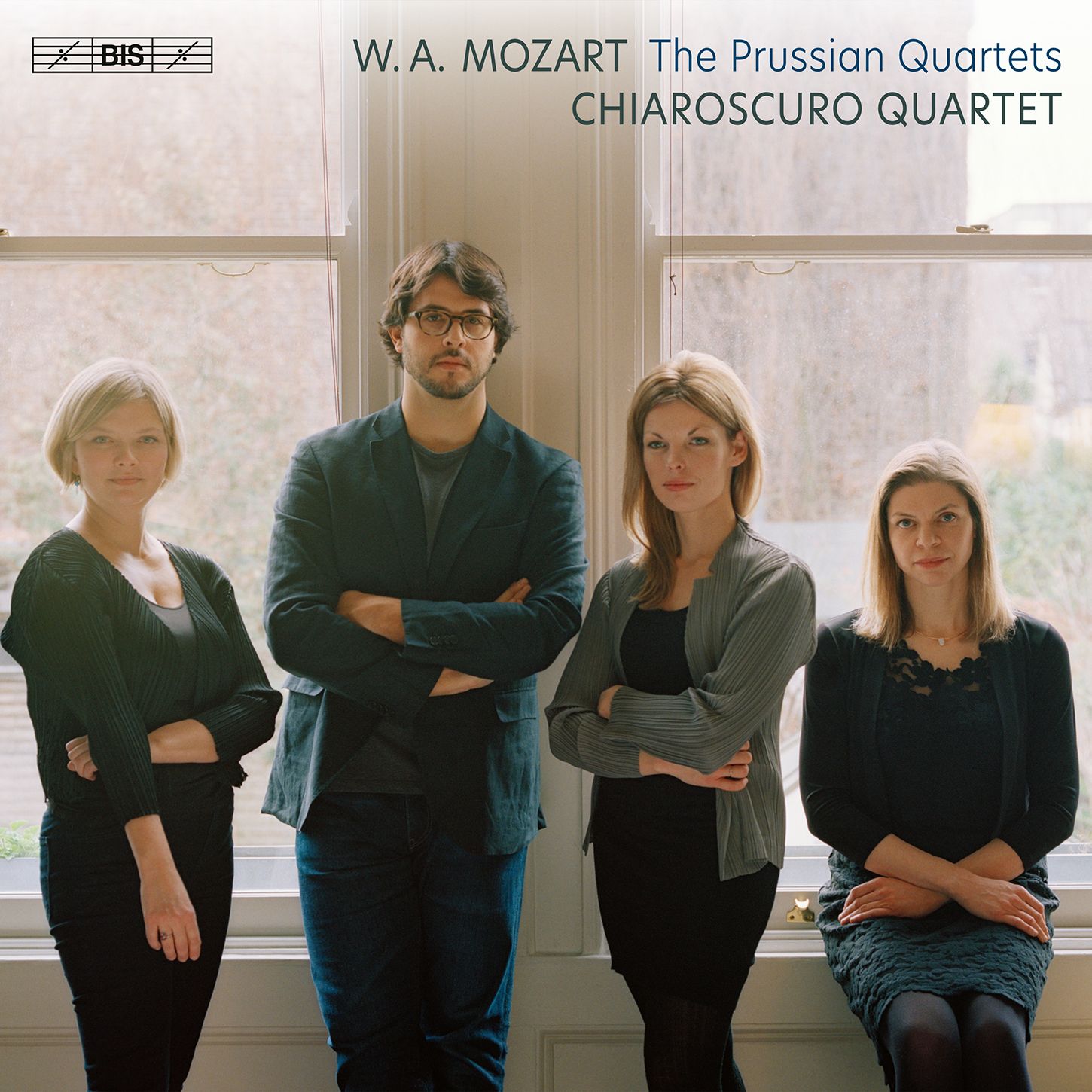The Chiaroscuro Quartet triumphs in Mozart's Prussian Quartets
There appears to be absolutely nothing negative to say about this disc from any angle

The wonderful Chiaroscuro Quartet returns to Classical Explorer with three of Mozart’s greatest string quartets. We previously met them in Beethoven (Op. 18 Nos. 4-6) and Haydn (Op. 76 Nos. 1-3 and Op. 76 Nos. 4-6).
Now. we have three of Mozart’s so-called “Prussian” Quartets, pieces written for Friedrich Wilhelm II, King of Prussia (an amateur cellist: obligingly, Mozart wrote prominently for that instrument).
Written in June 1789, No. 21 in D, K 575 was intended to be the first of a set of six; only three were forthcoming. No. 22 in B flat, K 589 and No. 23 in F, K 590 were finished the following year.
The D major opens with an Allegretto fo the finest craftsmanship. It all sounds so fluent and easy until one starts to look at the workings of the score. The Chiaroscuro’s performance is magnifient: light and airy (they use original instruments and informed performance practice, remember) and yet Mozart’s harmonic darkenings are beautifully honoured. The piece is just before the opera Così fan tutte in Mozart’s work chronology, and there is a similar sense of ease. Just listen to furst violinist Alina Ibragimova’s articulation in the first movement:
The choice of the noted authority Richard Wigmore as booklet note contributor is congruent with the excellence of this release: his essay is fabulously informed. He is absolutely right to point out the similarity between the opening theme and Mozart’s song, Das Veilchen, K 476. Hear for yourself in this wonderful, classic recording of the song: soprano Elly Ameling with Dalton Baldwin on piano. The cello, here the excellent Claire Thirion, is particularly busy in this movement, and Thirion’s dialogues with Ibragimova are incredibly touching, the very essence of chamber music.
There is a nice inversion of the established order of things in the Trio of the Menuetto third movement, with Emilie Hörnlund providing the bass for Thirion’s soaring cello. The finale is K 575’s crowning glory, though, a masterpiece in ounterpoint, all based on the initial theme. Magical - and how the Chiraoscuro Quartet revels in Mozart’ machinations. Another aspect they bring out the modernity of some of the writing. We really hear the boldness of his genius in this miraculous performance:
The B flat-Major Quartet, K 589 again has prominent cello, but mainly in its first two movements. Structurally, the piece is fascinating in that it is in the Trio of. the Menuetto where its structural weight lies also, the Trio lasts double the length of the Menuetto. But we’re not there yet: the triple-time opening Allegro is magniicent in its bracing ostensible simplicity - there because Mozart can entertain with the most fascinating harmonic detours and melodic transformations:
The contrast to the Larghetto could not be greater. With the cello high on its A-string, the music leads us Heavenwards in the way only late Mozart can. The Chiaroscuro’s way of maintaining lower dynamics is absolutely gripping. it is as if they are whispering universal secrets into our ears:
When it comes to the third movement, for once it becomes the most fascinating. No plateau of relief, the intense Menuetto, full of virtuosity in its little flourishes, prepares the way for the Trio, fascinating texturally, and how the Chiaroscuro Quartet conveys a sense of freshness here, as if discovering Mozart’s explorations for the first time:
The finale scampers along (it lasts 4’04; I say that because the BIS booklet gives 3’49) but includes a fabulous haronic shift to D flat (from flat) - it’s when the cello has a pedal note (sustained bass note). A glorious quartet, beautifully played.
The F-Major Quartet. K 590 is of heavenly length (just a second under 38 minutes). The Allegro moderato is in no hurry; instead, it revels in its own blessed serenity. Listen to the way the Chiaroscuro Quartet works with gesture, too, finding real surprises in Mozart’s score:
The Andante is a little miracle, taking its ultra-simple opening rhythmic gesture and working with it over and over again. How beautifully gracious is Thirion’s cello here; how ethereal Ibragimova and Pablo Hernán Benedi’s violins working in tandem. But it is Mozart’s invention they are celebrating. This is an Andante of genius invention, delivered with real gentilité by the Chiaroscuro Quartet:
To my ears, there is a Haydnesque boisterousness about the robust menuetto (which seems to sit on the cusp of a Scherzo), and I love the rawness of the Chiaroscuro’s period instruments (from the Instrumentarium provided by BIS, none of the four instruments is a copy):
The finale hardly stops to draw breath, and is heard here with real intensity. On a performance level, the control the Chiaroscuro Quartet delivers is remarkable. And the ending leaves us hanging in the air beautifully ...
At just a few seconds shy of 90 minutes, this BIS SACD is remarkable value, given the quality of performances. The recording (at the Britten Studio, Snape Maltings) is superb.- no surprise to see that the Producer is one Andrew Keener; the Engineer, Editor and Mixer, Oscar Torres, too, seems to be a master of his craft. There appears to be absolutely nothing negative to say about this disc from any angle, even down to BIS’ eco-friendly packaging.
